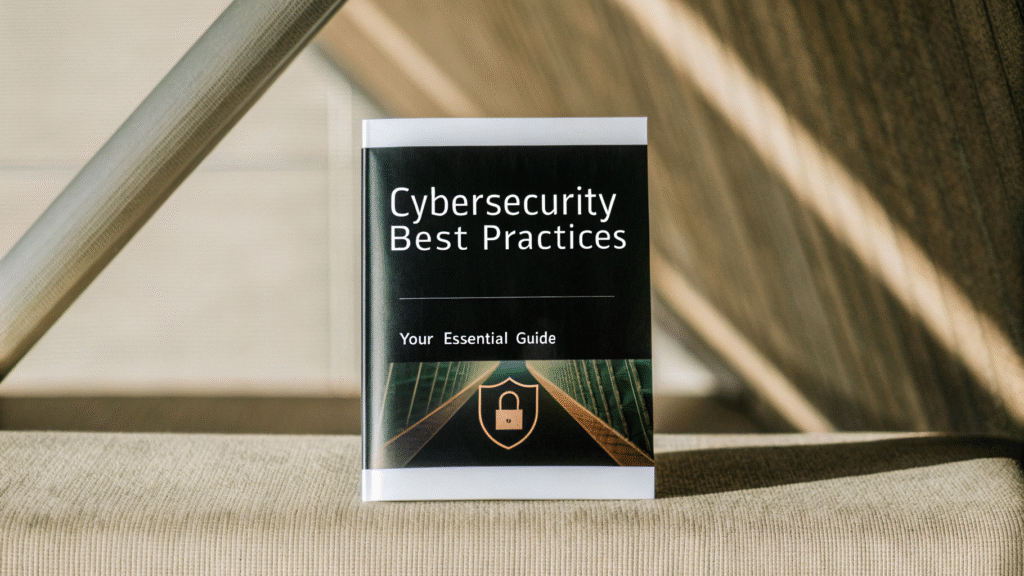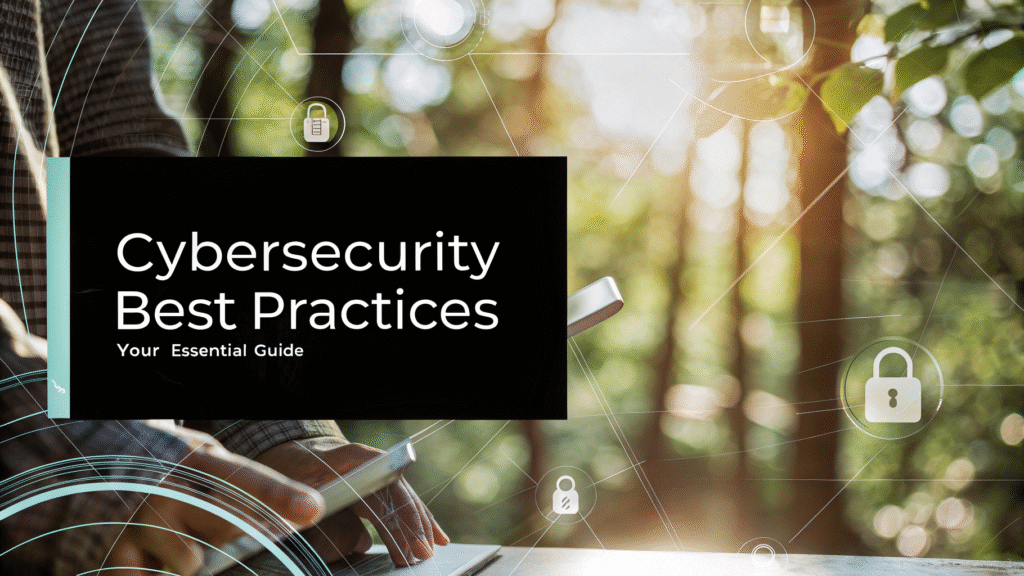
Introduction
In our hyper-connected world, the term cybersecurity best practices can often feel like a complex concept reserved for IT departments. Yet, digital security is a shared responsibility. From entrepreneurs protecting their startups’ sensitive data to content creators safeguarding their online presence, understanding and applying fundamental cybersecurity principles is no longer optional—it’s essential. This guide, therefore, breaks down these practices into clear, actionable steps that anyone can implement to build a formidable digital defense.
A Brief History of Cybersecurity
The need for cybersecurity has evolved dramatically alongside technology itself.
- The Early Days (1970s-1980s): As computers became networked, the first viruses emerged as academic experiments or pranks. Security focused on physical access and simple passwords.
- The Rise of the Internet (1990s): With widespread internet adoption came malicious malware, worms, and the first firewalls and antivirus software designed to block them.
- The Modern Era (2000s-Present): Cyber threats have become sophisticated, state-sponsored, and financially motivated. Ransomware, phishing scams, and large-scale data breaches dominate headlines, making cybersecurity best practices a top priority for everyone, not just corporations.
Who Needs This Guide? (Audience & Demographics)
This information is critical for a wide range of users:
- Entrepreneurs & Small Business Owners: Protect customer data, financial information, and your company’s reputation from devastating breaches.
- Marketers & Content Creators: Secure social media accounts, websites, and client data. A single compromised account can ruin credibility.
- Freelancers & Remote Workers: As digital nomads, your laptop is your office. Securing it is paramount to protecting your livelihood.
- Essentially, everyone who banks online, uses social media, or stores personal information on any device is part of the target audience.
Key Features of a Strong Cybersecurity Posture
A robust approach to cybersecurity isn’t about one single tool; it’s a layered strategy built on several key features:
- Proactive Defense: Stay ahead of threats by anticipating them through education and preparation.
- Access Control: Ensuring only authorized users can access specific data and systems.
- Data Protection: Keep your sensitive information secure, both in storage and on the move.
- Incident Response: Have a ready plan to respond quickly and limit breach damage.
The Business & Marketing Potential of Being Secure
Strong cybersecurity is more than just risk mitigation; it’s a competitive advantage.
- Builds Trust: Customers and clients are more likely to do business with a company that proves it takes their data seriously.
- Protects Your Brand: A single data breach can cause irreparable harm to a brand’s reputation that took years to build.
- Ensures Business Continuity: A ransomware attack can shut down operations for days. Prevention is far cheaper than the cost of downtime.
Cybersecurity Best Practices & Everyday Tips
Here are the most critical actions you can take today to significantly improve your security.
For Individuals & Professionals
- Master Password Management:
- Use a unique, strong password for every account. A password manager is the easiest way to do this.
- Enable multi-factor authentication (MFA) wherever it’s offered. This adds a crucial second step to the login process.
- Be Phishing Aware:
- Scrutinize emails and messages. Don’t click on suspicious links or download attachments from unknown senders.
- Look for tell-tale signs: poor grammar, urgent language, and email addresses that don’t quite match the legitimate company.
- Update Everything:
- Regularly update your operating system, apps, and software. These updates often include patches for critical security vulnerabilities.
- Secure Your Connections:
- Avoid using public Wi-Fi for sensitive tasks like online banking. If you must, use a Virtual Private Network (VPN) to encrypt your connection.
For Businesses & Teams
- Implement the Principle of Least Privilege: Employees should only have access to the data and systems absolutely necessary for their jobs.
- Conduct Regular Security Training: Human error is a leading cause of breaches. Train your team to recognize phishing attempts and follow security protocols.
- Backup Your Data Religiously: Follow the 3-2-1 rule: Keep at least three copies of your data, on two different media, with one copy stored off-site (e.g., cloud storage).
- Develop an Incident Response Plan: Know exactly who to contact and what steps to take if you suspect a security incident.
Alt text: A diverse team collaborating on implementing cybersecurity best practices in a modern office setting.
Challenges & Limitations
Even with the best practices, challenges remain:
- Human Factor: The most sophisticated security can be undone by one employee clicking a malicious link.
- Complexity: As businesses adopt more cloud services and apps, the “attack surface” expands, making it harder to secure everything.
- Resource Constraints: Small businesses often lack the budget for a dedicated IT security team.
- Evolving Threats: Cybercriminals constantly develop new tactics, requiring continuous vigilance and adaptation.
Future Outlook
The future of cybersecurity will be shaped by emerging technologies:
- Artificial Intelligence (AI): AI will be used by both attackers to create more convincing scams and by defenders to detect anomalies and threats in real-time.
- Zero-Trust Architecture: The model of “never trust, always verify” will become standard, requiring identity verification for every person and device trying to access resources.
- Increased Regulation: Governments worldwide will continue to introduce stricter data privacy laws, making compliance a key aspect of cybersecurity best practices.

Conclusion
Building a strong cybersecurity posture doesn’t happen overnight. It is an ongoing process of education, vigilance, and consistent action. By integrating these cybersecurity best practices into your daily routine—from using a password manager to questioning suspicious emails—you transform from a potential victim into a informed defender. Start with one or two tips from this guide, and gradually build your digital hygiene habits. In the modern digital landscape, therefore, taking these essential steps is not only wise but also the most important investment you can make in protecting both your personal and professional future.